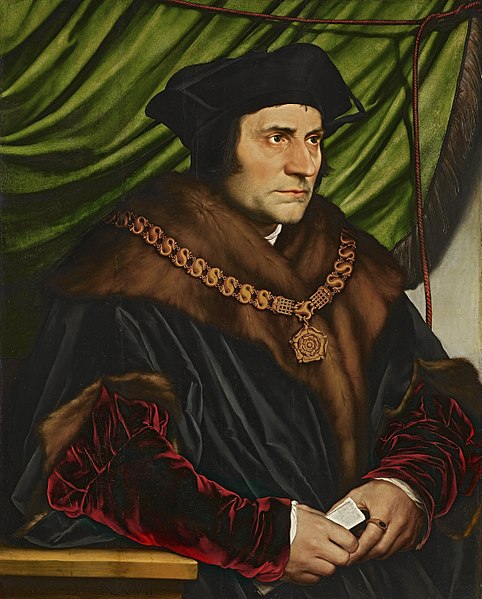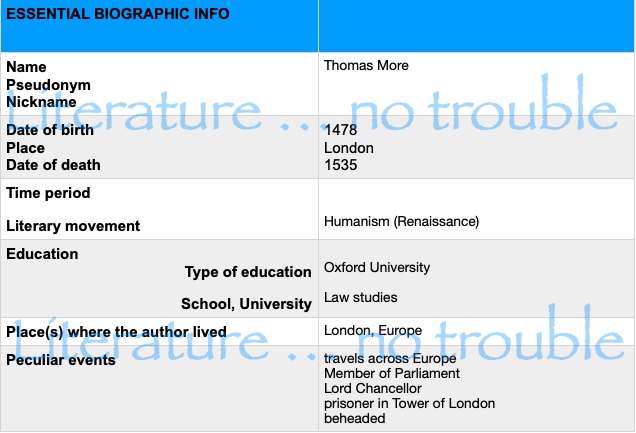Thomas More
Useful Expressions for the Biography ChartThe biography chart is a didactic aid. A student of mine provided this one. It contains essential biographic information about the author. Sentences are not provided because by following the biographic facts and the inputs about the literary production, students can easily make simple sentences, then paragraphs and finally a text.
To further enhance your understanding and maximize the benefits of the chart, we invite you to check out our YouTube channel. There, you'll find a comprehensive video tutorial that explains step-by-step how to use the bio chart effectively.
In the pages of this site you can find a collection of materials for study and didactic aids, freely available and downloadable. The PDF file down the page is an example thereof. Feel free to use it.
It may be used as a compensatory measure for students with dyslexia and as material for study by anyone else. You can enhance your experience by utilizing the interactive biography chart. Additionally, the page featuring useful expressions for biography charts can assist you in developing your own text.
Thomas More's biographic chart covers his lifetime, from 1478 BC to 1535.



LnT suggests:
LnT Take a look at the presentation of Utopia. The guide in 6 literary elements will lead you to a better understanding of Thomas More's prose work.
LnT Don't miss my student's presentation on Thomas More's prose work, which will be accompanied by a detailed map she produced to help bring the story to life. Make sure to watch as she illustrates the map during the presentation.
LnT Listen to the presentation of More's prose work by a student of mine.
LnT ✍️ Create Personal Notes: With our Interactive Biography Chart, you can easily write personal notes and reports on the biographies of different authors. Write down important details, organize your thoughts, and record your insights directly on the chart. Engage with the content and develop your own unique literary annotations. Try it now!
